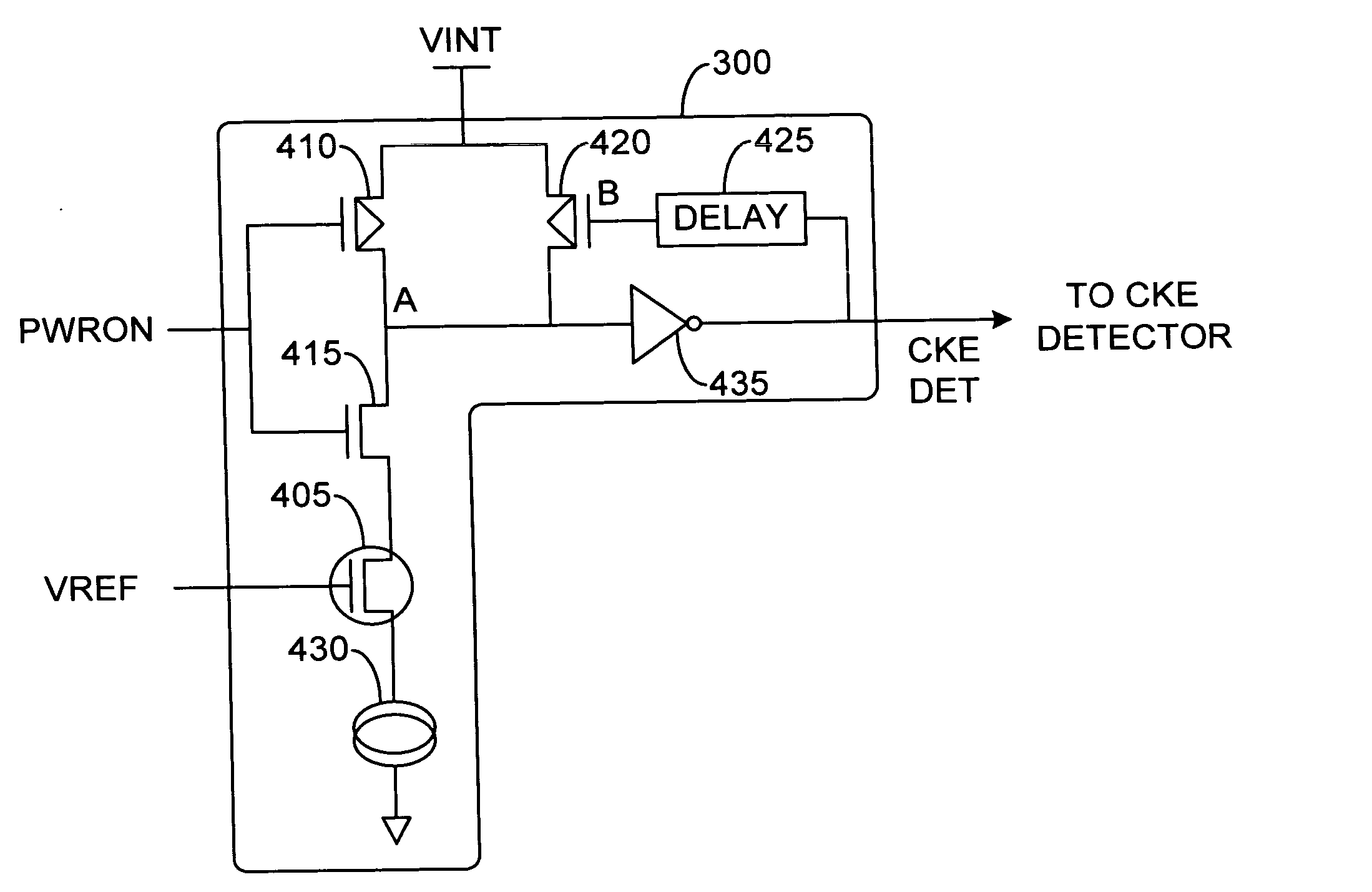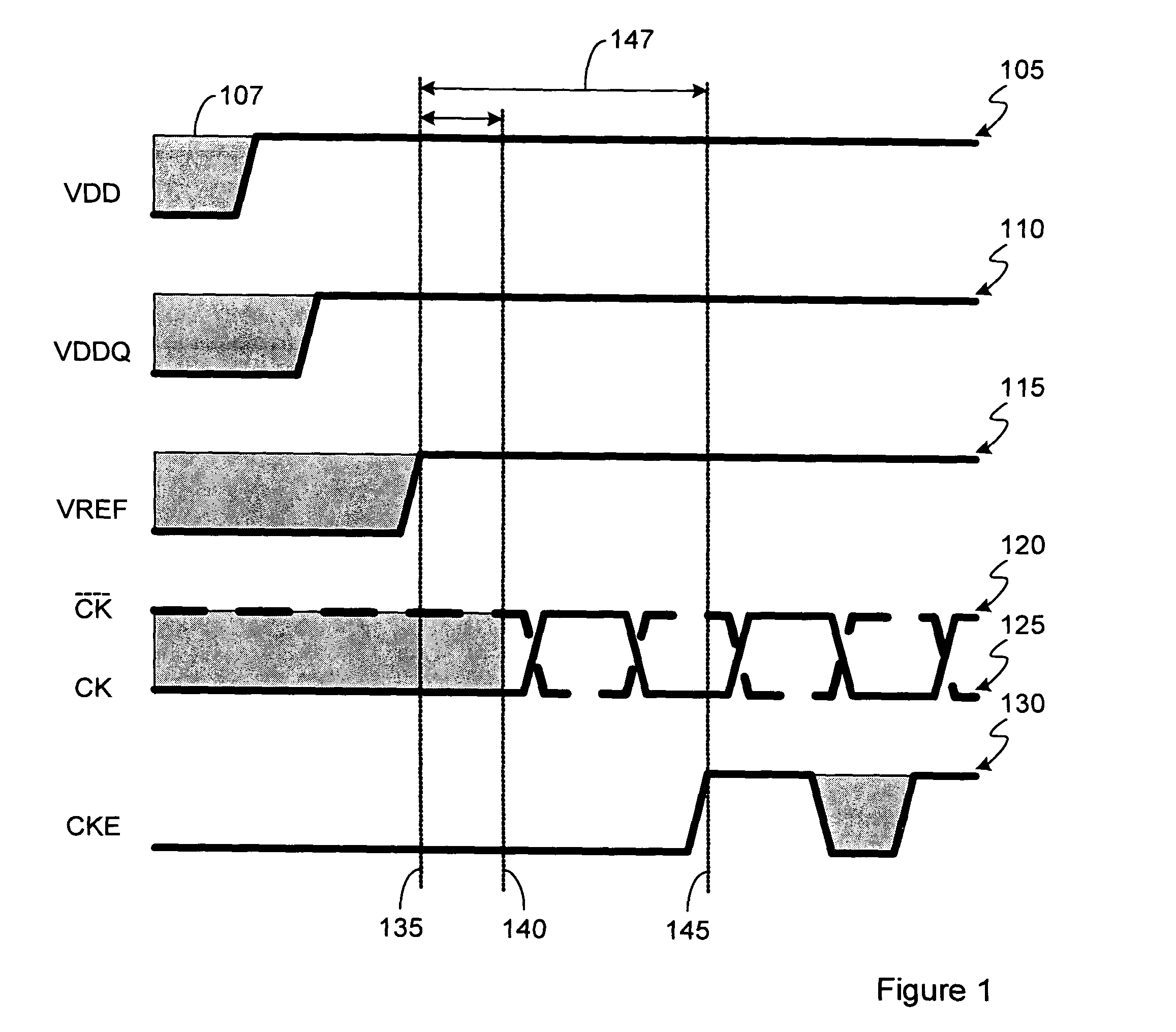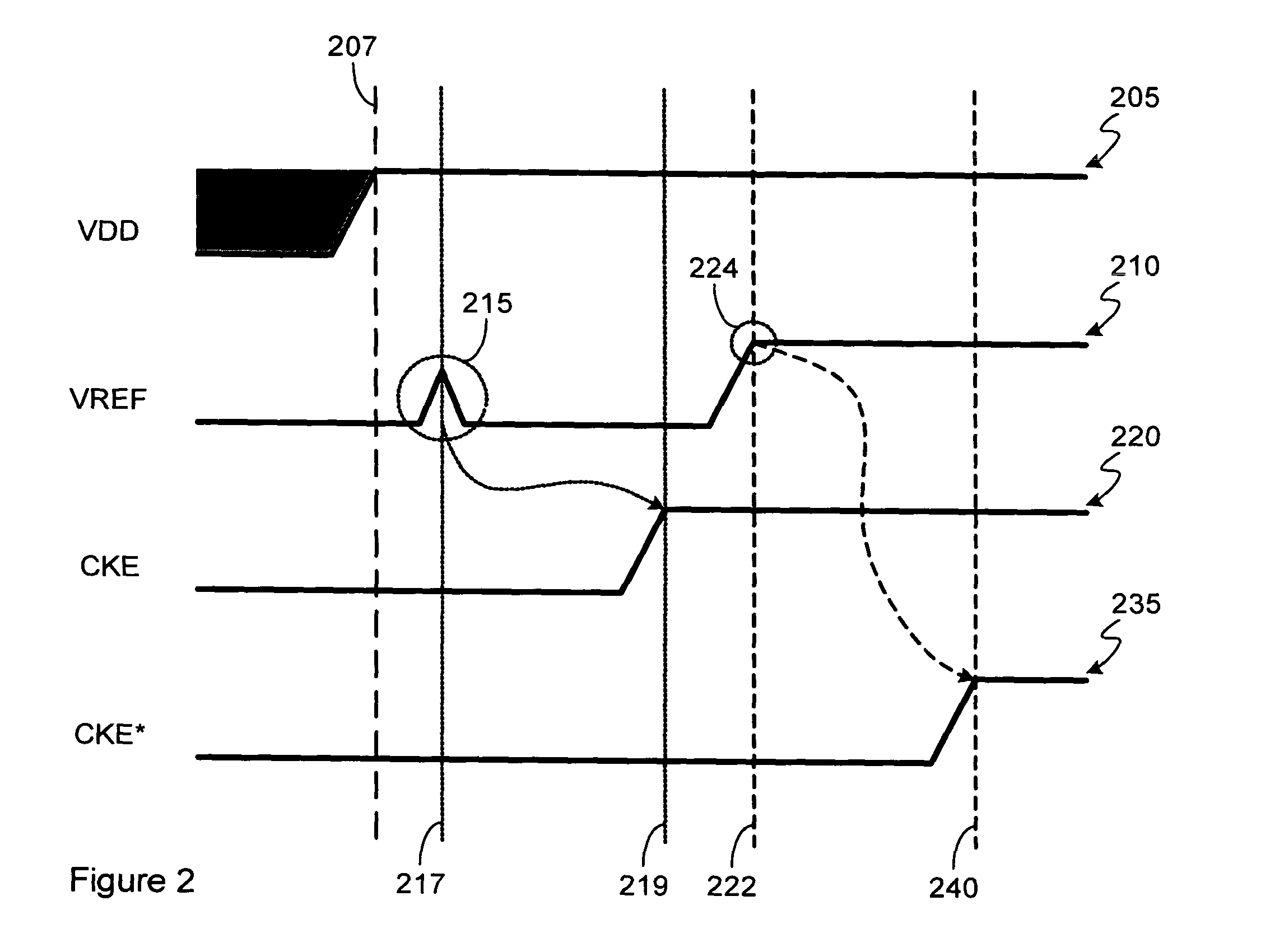Reference voltage detector for power-on sequence in a memory
- Summary
- Abstract
- Description
- Claims
- Application Information
AI Technical Summary
Benefits of technology
Problems solved by technology
Method used
Image
Examples
Embodiment Construction
[0021] The making and using of the presently preferred embodiments are discussed in detail below. It should be appreciated, however, that the present invention provides many applicable inventive concepts that can be embodied in a wide variety of specific contexts. The specific embodiments discussed are merely illustrative of specific ways to make and use the invention, and do not limit the scope of the invention.
[0022] The present invention will be described with respect to preferred embodiments in a specific context, namely a memory adherent to the JEDEC DDR SDRAM technical standard. The JEDEC DDR SDRAM technical standard is published in a document entitled “JEDEC Standard—Double Data Rate (DDR) SDRAM Specification—JESD79C (Revision of JESD79B),” published March 2003, which is herein included by reference. The invention may also be applied, however, to other memories and integrated circuits wherein the accurate detection of a reference voltage signal during a power-on sequence is ...
PUM
 Login to View More
Login to View More Abstract
Description
Claims
Application Information
 Login to View More
Login to View More - R&D
- Intellectual Property
- Life Sciences
- Materials
- Tech Scout
- Unparalleled Data Quality
- Higher Quality Content
- 60% Fewer Hallucinations
Browse by: Latest US Patents, China's latest patents, Technical Efficacy Thesaurus, Application Domain, Technology Topic, Popular Technical Reports.
© 2025 PatSnap. All rights reserved.Legal|Privacy policy|Modern Slavery Act Transparency Statement|Sitemap|About US| Contact US: help@patsnap.com



